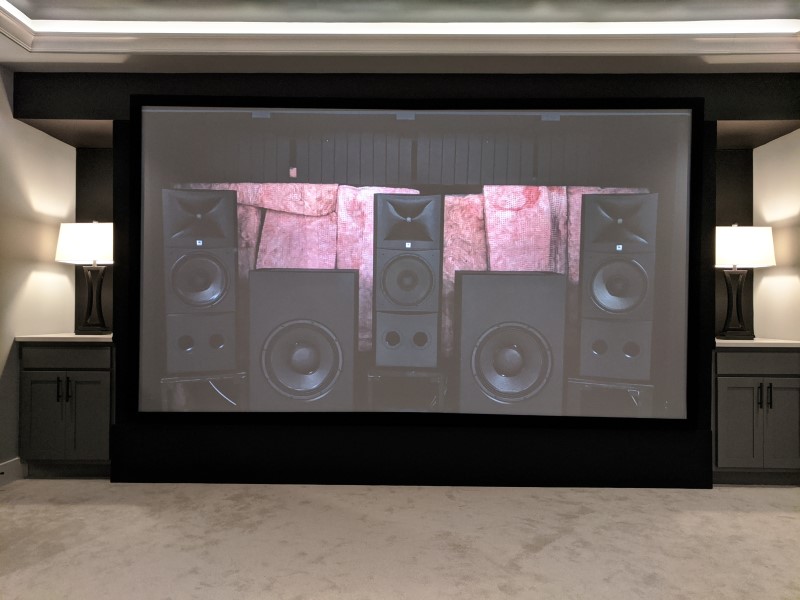Are Three Identical Front Speakers Best?
Spend any time online in home theater forums and you’ll read, “Dedicated center channel speakers are compromised designs.” They are not wrong. When the idea of a center channel was invented, the thought was that it would be best to have three identical speakers at the front of your room. People quickly figured out that this wasn’t going to work. Because there was something else at the front of the room that was also very important. Your TV. So a compromise was made. A speaker was designed that could be placed below (or above) your TV. But that was never the plan. So, is it best to have three identical speakers up front?
Answer: Technically, yes. Functionally…not so much.
Life is Compromise
The new center speaker was designed to sound similar to your left and right speakers so that sounds that panned between them were seamless. But if you run some tests in your home theater playing one speaker at a time, you’ll see that your center channel sounds different than either your left or right. This is almost universally true. It has to do with the placement of the tweeter, the acoustics of the front of your room, and how you have your speaker mounted. It won’t sound identical to your front speakers.
But here’s the dirty little secret all those who say that three identical speakers up front are best won’t tell you: Your front left will sound different than your front right!
When these tests are run, often it is comparing the center to both the left and right playing together, or with one one of the other two fronts. Very rarely do they test the left and right against each other! This is because they assume that because the speakers are identical, they’ll sound the same. This is far from the truth.
Don’t Forget About the Room
Most of our theater rooms are not symmetrical. They’ll share a space with other parts of the house or they just have different materials in different spots. A window on one wall will change how the speaker closest to it sounds versus the other speaker that has no wall to its side (or just drywall). We try to combat this as best we can with room treatments. But they are only so effective. We mostly install our theaters in existing rooms. We do the best with what we have. But those inconsistencies within our rooms can change how the speakers sound when we compare them to each other specifically.
But I’ve Never Noticed a Problem Before!
Of this, I am painfully aware. In fact, if you have a reasonably capable center speaker paired with similar front speakers you’ve likely never noticed them sounding different. If you are saying, “But I never really listened before though!” Yeah, that’s not necessary. If you have a timbre-matching problem with your front speakers, it isn’t subtle. The left to right pan at the front of the room will stand out glaringly if your speakers are mismatched. A car going from left to right will completely change the tone of its sound as it passes through the center channel. You won’t have to “listen” for it. It will be obvious.
And that’s the rub. Sure, if you get three identical speakers up front you’ll have the best shot of having perfect timbre matching and convincing pans. But if you take that center identical speaker and shove it in a cabinet (or put it on its side), you may find that they no longer match. That isn’t because of the speaker, it is because of the placement. You can minimize the detrimental effects, but you might be better off buying a dedicated center speaker that was designed for in-cabinet placement.
Center Speaker Design
Most speakers designed for front left and right duties assume certain things. They assume there will be space around them. Many have a rear port to increase the bass output. They were never really meant to be shoved under a TV or inside a cabinet.

Center channels speakers, on the other hand, were designed with these things in mind. They often don’t have ports (or are front-ported when they do). Some have switches that can compensate for compromised placement. Plus, they were designed for these unfavorable installations while still sounding very similar to their freestanding brethren. If you can place your identical center speaker in exactly the same way you place your front left and right speakers, they might sound the best. But most of us can’t. And that’s why center speakers exist and often are the best sounding options.
Wrap Up
Speaking in absolutes is always problematic. You have to be very careful that what you are saying is correct. A center channel speaker’s design may be a compromise, but that doesn’t mean that it sounds worse. In many situations, a dedicated center speaker will sound better because of placement over a speaker that is identical to your front left and right speakers.


